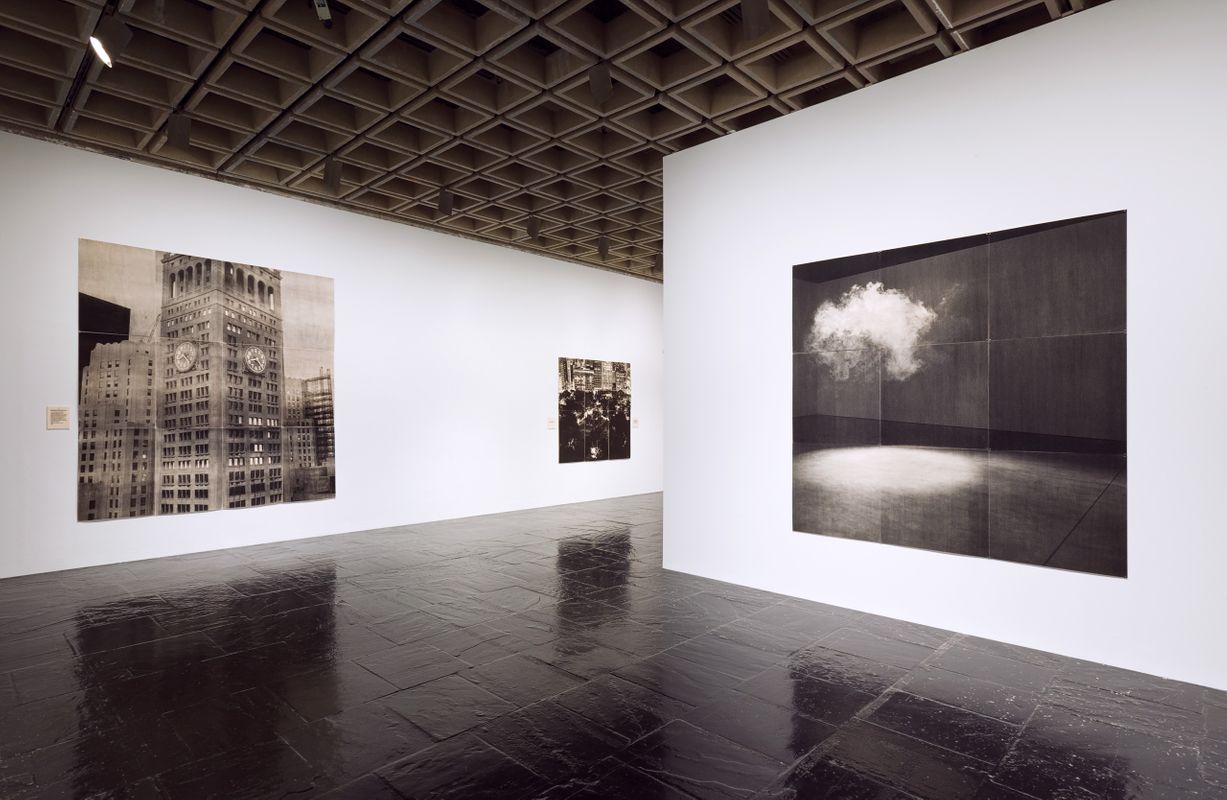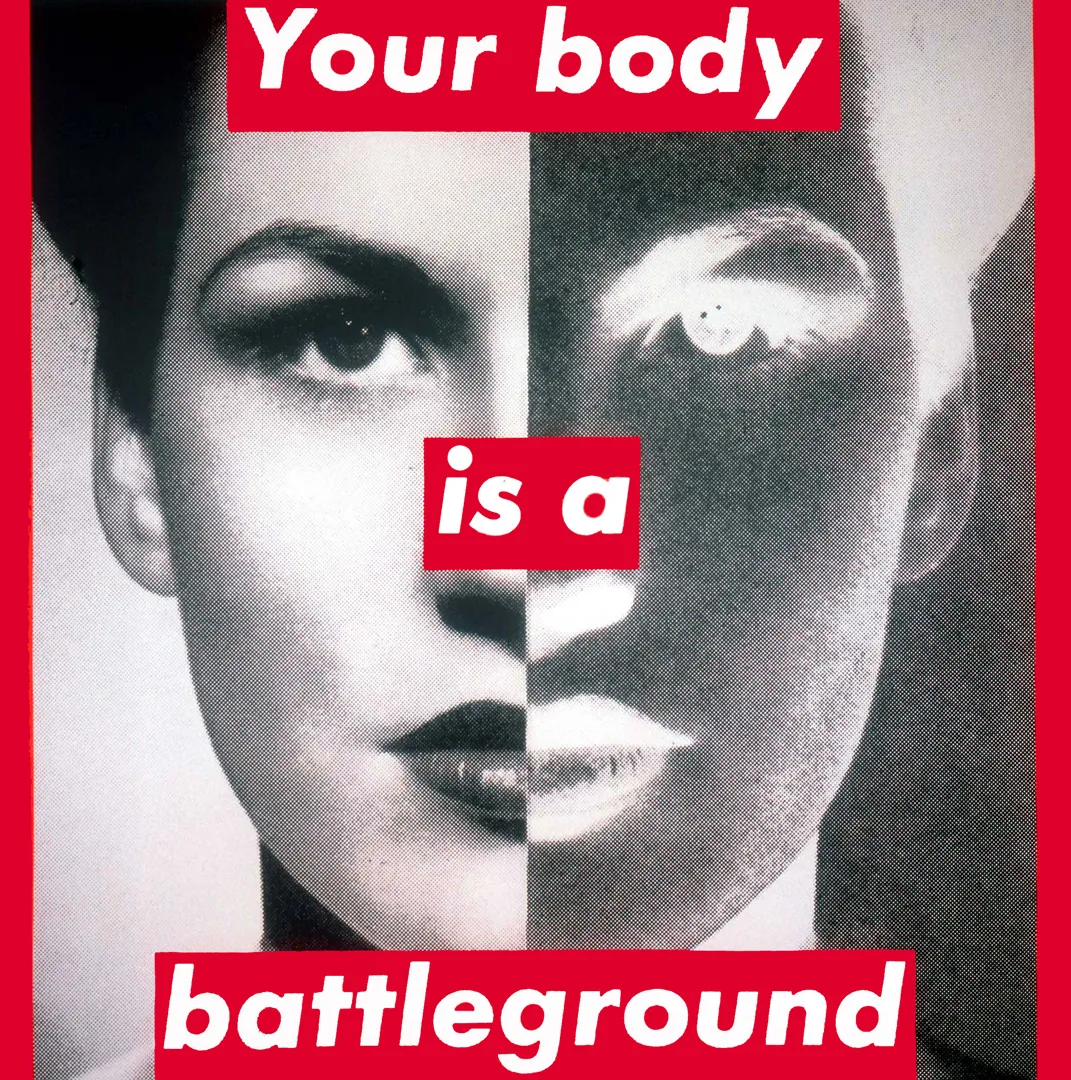| Lynne Hershman Beeson |
Lynn Hershman Leeson, Roberta's Construction Chart #2, 1975
|
 |
| Eleanor Antin, Carving: A Traditional Sculpture, 1972 “purposely toy[ing] with the traditional process of Greek sculptors, who were said to find their ideal form by chipping away at a block of marble and discarding any unnecessary material.” (Antin) |
Howardena Pindell, Stills from Free, White, and 21, 1980. The Kemper Museum writes, "Presenting a strong statement against discrimination, the video draws attention to stereotypical racial roles and the ways in which people of color are expected to perform and behave. The contentious dialogue between these two women also functions as a critique of the notion of “Woman” employed in the feminist debates of the 1970s, which tended to overlook the impact of differences of class and race."
| Hannah Wilke, S.O.S Starification Object Series: An Adult Game of Mastication”, 1974-5 |
 |
| Hannah Wilke, SOS, 1974-5 |
| Hannah Wilke, single chewing gum sculpture in plexi box, 1974-5 |
Martha Rosler, Semiotics of the Kitchen, 1975
Carolee Schneeman, Interior Scroll, 1975
Faith Ringgold, The Flag is Bleeding, 1997
Judy Chicago and many others, The Dinner Party, 1979
|
Judy Chicago and many others, The Dinner Party, 1979
|
from Wikipedia
Feminist campaigns are generally considered to be one of the main forces behind major historical societal changes for women's rights, particularly in the West, where they are near-universally credited with having achieved women's suffrage, gender neutrality in English,reproductive rights for women (including access to contraceptives andabortion), and the right to enter into contracts and own property.[5]Although feminist advocacy is and has been mainly focused on women's rights, some feminists, including bell hooks, argue for the inclusion ofmen's liberation within its aims because men are also harmed by traditional gender roles.[6] Feminist theory, which emerged from feminist movements, aims to understand the nature of gender inequality by examining women's social roles and lived experience; it has developed theories in a variety of disciplines in order to respond to issues such as the social construction of gender.
inheritors....
Cindy Sherman
| Cindy Sherman, Untitled Film Still #3, 1977 |
| Cindy Sherman, Untitled (#153), 1985 |
 | |
|
| Lorna Simpson, Five Day Forecast (1988) |


 |
Lorna Simpson, The Clocktower, The Park, The Cloud, as installed at the Whitney Museum, 2007 |
 |
| Barbara Kruger, Untitled (your body is a battleground)1989 |
 |
| Barbara Kruger, You invest in the divinity of the masterpiece, 1982 |

| Jenny Holzer, 1980's |
 |
| Jenny Holzer, You are a Victim, 1980's |
Jennie Holzer
 | ||
|
today's generation


kara Walker, Slavery! Slavery! 1997, Brooklyn Art Museummore info here.
“I find that I am rewriting History, trying to make it resemble me, Kara (and me, negress) but doing it in little bits and pieces. It’s a monomaniacal undertaking, but there is a lot of (white, patriarchal) damage to undo. I mean that’s the only way history is written anyway, in little pieces. I would have preferred to make up my own Mythology and make it stick as effectively as those ante- and post-bellum characters have in the collective unconscious, or to make up stories as influential as the American Revolution and its heroes and ideals. But alas, I’ve got only myself, the Penny Empire of me to work with, so that’s what I do.”
Kara Walker, “Kara Walker,” interview by Ali Subotnick, Make, 92 (Special Edition 2002): 25-27.

 |
| “The End of Uncle Tom and the Grand Allegorical Tableau of Eva in Heaven", from Slavery, Slavery, Kara Walker, 1997 |
Kara Walker, Subtlety, or, the Marvelous Sugar Baby, 2014



more:

Janine Antoni, Gnaw, 1992

Janine Antoni, Butterfly Kisses, 1996
http://learningtoloveyoumore.com/

more:
Janine Antoni, Gnaw, 1992
Janine Antoni, Butterfly Kisses, 1996
 |
Janine Antoni, 2038, 2000, C-print, artist's frame, 20 x 20 inches |
http://learningtoloveyoumore.com/
Miranda July
and many more
and many more
Comments
Post a Comment